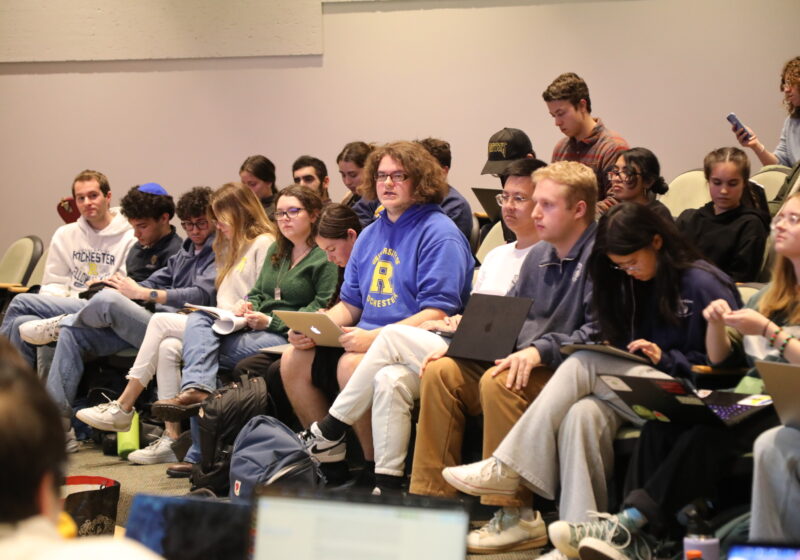
Drue Sokol, Photo Editor
A team of UR researchers has developed a new way to track the spread of infectious disease — by following Twitter messages, no less. This method, part of a growing trend in Big Data research, will be the focus at the Rochester Big Data Forum, which will be held Oct. 4 to 6.
“We track the spread of influenza-like disease in real-time,” Adam Sadilek, team member and computer science postdoctoral associate, said. “We answer health questions about specific people, in real time, and at a population scale. This was impossible until now.”
Along with Sadilek, the team comprised Computer Science Chairman Henry Kautz and Associate Professor of Psychiatry Vincent Silenzio.
Their collaboration began four years ago when they used pocket-sized GPS loggers to study health patterns of individuals and populations. Two years later, the team made the switch to online social media like Twitter because its tweets provided richer information. Based on their embedded geo-tags, tweets can be used to predict the spread of disease and ostensibly whether a given person will become ill.
“As far as we can tell for things like the flu, [our data] appears to be very highly correlated with data from the [Centers for Disease Control and Prevention],” Kautz said.
Kautz hopes to further validate their findings by combining the data with sundry polls and tests, particularly those that survey small samples of Twitter users.
According to Sadilek, their findings may have a widespread impact on non-profit organizations and government agencies, for example, especially since the data is cheap and able to be quickly collected.
“[On] a personal level, our tools empower individuals to make better informed decisions,” he said. “For example, when buying a house, people can readily see which areas have high prevalence of pollution or asthmatic symptoms.”
The team’s research is a part of the rapidly expanding field of “Big Data,” a term used to describe a method of managing and analyzing large amounts of data, which are, in part, now available due to advances in digital information and computing power, Kautz explained.
“It’s becoming a more and more important part of every field,” he said.
UR students likewise recognize the growing role of Big Data in data management and collection and scientific research.
“While I do not know for sure, it seems like this technology will add to the epidemiological box of tools to procure more information about the spread of disease,” Mary Willis, sophomore and epidemiology major, said.
Cozen is a member of the class of 2015.



